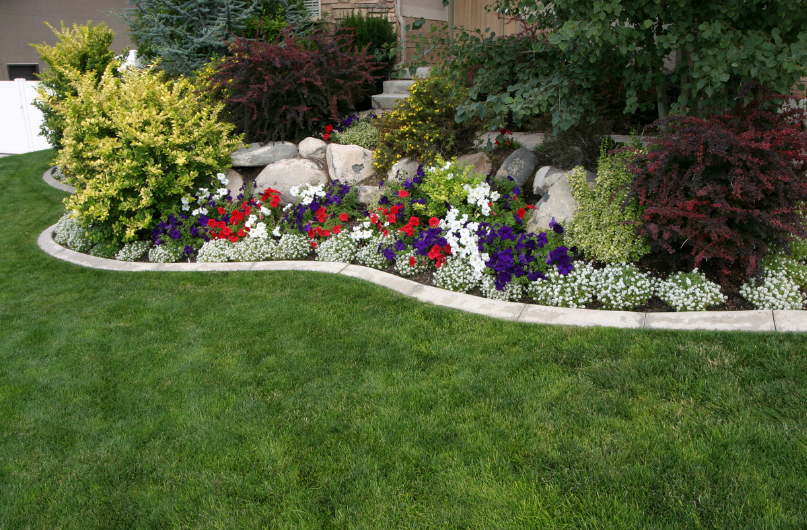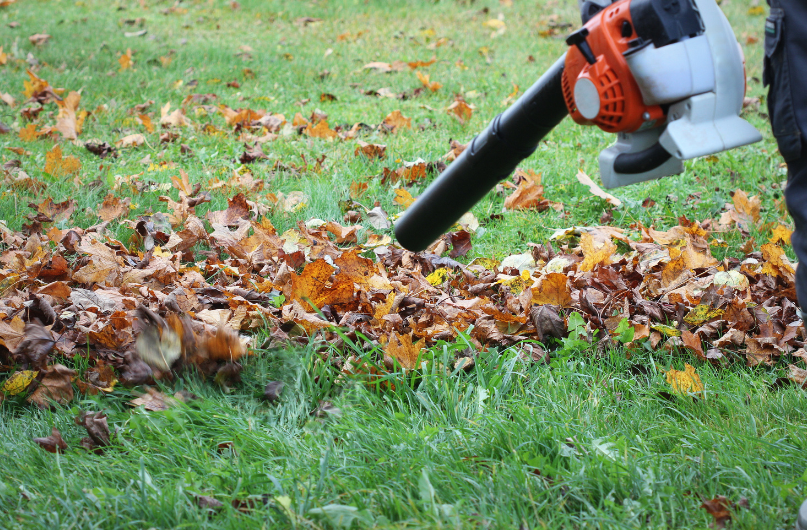When it pertains to maintaining a lush garden in New Zealand, understanding the unique demands of each season is essential. You’ll need to clear debris and fertilize in spring, while summer emphasizes efficient watering and pruning. Autumn becomes the time for garden cleanup and preparation for the next growing cycle, and winter challenges you to protect plants from frost. But knowing the local climate and soil conditions isn’t enough. Have you ever wondered how sustainable practices can make your garden not only beautiful but also sturdy? Let’s explore the subtleties that can elevate your landscaping efforts.
Main Points
- Clear debris and fertilize with a balanced, slow-release product in spring for healthy new growth.
- Water lawns and plants deeply in the morning during summer to reduce evaporation.
- Aerate soil and overseed bare patches in spring for a denser lawn.
- Use organic mulch to retain moisture and suppress weeds throughout the year.
- Protect sensitive plants from frost in autumn by using frost cloth and applying mulch around roots.
Spring (September – November)

Spring is the perfect time to prepare your garden and lawn for the year ahead.
Start by clearing debris, fertilising with a balanced, slow-release product, and ensuring your mower is in top shape.
Don’t forget to keep an eye out for weeds and pests, addressing them promptly to maintain a healthy, vibrant landscape.
Preparation and Planting
As the mild weather of September to November arrives, it’s the perfect time to clean up your garden, trim plants, and prepare the soil for new growth. Start with soil preparation by turning over the soil and adding compost to improve its structure and nutrient content. This will create an ideal base for your spring plants.
Next, focus on flower planting. Choose a variety of flowering plants, such as perennials and annuals, to guarantee continuous blooms. When selecting trees, opt for species that are well-suited to your region and provide seasonal interest. Trees like kowhai and flowering cherry are excellent choices for a vibrant spring display.
Incorporate effective mulching techniques to retain moisture and suppress weeds. Apply a layer of organic mulch around your plants, but keep it away from the base of trees to prevent rot.
Establish a consistent watering schedule. Water newly planted flowers and trees in the morning to reduce evaporation and promote deep root growth. Monitor the weather and adjust as needed to make sure your plants receive adequate moisture without overwatering.
Lawn Care
To get your lawn thriving, start by vigorously raking away debris and dead grass to prepare for new growth. This step ensures your grass can breathe and absorb nutrients effectively.
Next, focus on soil aeration. Aerate your soil by using a garden fork or aerator tool to create small holes, allowing air, water, and nutrients to penetrate the grass roots deeply.
After aeration, consider grass seeding to fill in any bare or thin patches. Choose a high-quality grass seed suited for New Zealand’s climate and evenly distribute it over the prepared areas. Maintain consistent watering to help the seeds germinate and establish.
Lawn mowing is important during spring. Keep your mower blades sharp and set the height correctly to avoid cutting the grass too short, which can stress the lawn. Regular mowing encourages healthy growth and a neat appearance.
Nutrient application is vital. Apply a balanced, slow-release fertilizer to provide your lawn with the necessary nutrients it needs for robust growth. Follow the recommended application rates to avoid over-fertilizing.
Pest and Weed Control
Maintaining a lush and healthy lawn also involves vigilant pest and weed control during the spring months from September to November.
To keep your garden thriving, start by monitoring for early signs of pests like aphids, caterpillars, and slugs. Implement natural solutions such as companion planting to improve pest control. Introducing beneficial insects like ladybugs can also help keep pest populations in check.
Regularly inspect your garden and handpick weeds to prevent them from spreading. Organic methods, such as using homemade sprays or employing physical barriers, can efficiently control pests without harming the environment. Mulching offers numerous benefits, including weed suppression and moisture retention, which helps your plants grow more robustly.
Incorporate companion planting to optimize pest control naturally. For example, planting marigolds near tomatoes can repel nematodes. Additionally, encourage beneficial insects by growing plants like dill and fennel, which attract predators of common garden pests.
Summer (December – February)

During New Zealand’s summer, focus on watering your lawn early in the morning to maximize absorption and minimize water loss.
Apply a slow-release fertilizer in early summer to keep your lawn healthy and lush.
Raise your mower’s cutting height in hot, dry conditions to reduce stress on the grass and promote better growth.
Watering Techniques
Watering your lawn early in the morning during New Zealand’s summer guarantees maximum absorption and minimizes evaporation. Setting up a consistent watering schedule guarantees your lawn remains vibrant and healthy. One of the most effective methods is drip irrigation, which delivers water directly to the soil, maintaining best soil moisture levels.
Consider these tips for efficient watering:
- Use a quality lawn sprinkler with an adjustable pattern to avoid watering hard surfaces.
- Install a timer on your tap to prevent overwatering and ensure consistent hydration.
- Adjust your watering schedule based on weather conditions to maintain lawn health.
Drip irrigation reduces water waste and helps in evaporation reduction, keeping your lawn lush even during the hottest months. By maintaining consistent soil moisture, you can prevent dry patches and ensure even growth.
Regularly check your system to make sure it’s functioning properly and adjust your watering schedule as needed, especially during heat waves.
Plant Maintenance
To keep your garden thriving in New Zealand’s summer, water plants deeply in the early morning or late evening to reduce evaporation. Maintaining soil health is vital, so consider adding organic matter like compost to enrich the soil. Regular fertilizer application will support robust plant growth; opt for a balanced, slow-release fertilizer suited for summer conditions.
Flower pruning is important to encourage continuous blooming and a tidy appearance. Deadhead spent flowers and trim back overgrown branches to promote new growth. Similarly, tree trimming helps maintain the health and structure of your trees. Remove any dead or diseased branches and thin out the canopy to improve air circulation.
Garden weeding is a constant task during summer. Weeds compete with your plants for nutrients and water, so remove them promptly. Mulching around plants can help suppress weed growth, conserve moisture, and protect roots from the summer heat.
Don’t forget to inspect your plants regularly for pests like aphids and spider mites. Early detection and treatment can prevent significant damage. By focusing on these maintenance tasks, you’ll ensure your garden remains healthy and vibrant throughout the summer months.
Lawn Care
As you focus on maintaining your plants, don’t forget that summer lawn care is equally important to keep your entire landscape looking lush and vibrant. Start by making sure your soil health is at its best. Aerate the soil if necessary to improve water and nutrient absorption. Water your lawn deeply in the early morning to promote robust root growth and reduce water evaporation.
To keep your lawn healthy, follow these key practices:
- Fertilizer timing: Apply a slow-release fertilizer in early summer to provide necessary nutrients throughout the season.
- Grass types: Choose grass varieties suited to New Zealand’s climate, and consider shade tolerance when planting in areas with less sunlight.
- Lawn diseases: Regularly inspect your lawn for signs of common diseases and treat them promptly to prevent spreading.
Raise your mower height during the hot months to reduce stress on the grass. Taller grass shades the soil, helping retain moisture and prevent weeds. Keep an eye out for weeds and address them quickly to avoid competition with your grass.
Lastly, use a quality lawn sprinkler with an adjustable pattern to ensure even watering and avoid wastage on hard surfaces.
Autumn (March – May)

During autumn, focus on cleaning up your garden to prepare it for winter and the upcoming spring.
It’s the perfect time to plant spring-flowering bulbs and transplant shrubs to guarantee a vibrant display next season.
Don’t forget to aerate, fertilize, and overseed your lawn to maintain its health through the cooler months.
Garden Cleanup
When autumn arrives (March – May), focus on garden cleanup by diligently raking leaves and debris to prepare for winter. Effective leaf removal is important as fallen leaves can smother your grass, leading to mold and other issues. By clearing debris, you create a healthier environment for your garden, allowing it to breathe and thrive.
To guarantee thorough winter preparation, prioritize these key garden maintenance tasks:
- Leaf removal: Regularly rake and collect fallen leaves to prevent damage to your lawn and plants.
- Debris clearing: Remove dead branches, twigs, and garden waste to reduce the risk of pests and diseases.
- Lawn fertilization: Apply a quality fertilizer to strengthen your lawn before the colder months.
During this period, adjusting your mowing frequency is vital as growth slows down. Lower temperatures and shorter days mean your grass won’t need as frequent cutting.
Additionally, keep an eye on watering needs, especially if it’s windy, to maintain soil moisture levels.
Planting and Transplanting
Why not take advantage of New Zealand’s cooler autumn weather to plant and transplant your garden’s trees and shrubs? This season offers the perfect conditions for root development, ensuring your plants establish well before winter.
Start with proper soil preparation. Turn the soil to a depth of about 30 cm, removing any weeds and adding organic matter like compost. This improves soil structure and fertility, giving roots the best environment to grow.
When transplanting, handle the roots carefully to avoid damage. Dig a hole twice the width of the root ball to promote expansive root growth.
Establish a consistent watering schedule to keep the soil moist but not waterlogged. This is essential during the initial weeks after planting. Water deeply to encourage roots to grow downward.
Apply mulch around the base of your plants to retain soil moisture and regulate temperature. A 5-7 cm layer of organic mulch, like bark or straw, works well.
Selecting the right fertilizer is key. Opt for a balanced, slow-release fertilizer to provide steady nutrients over time. This supports steady root development and prepares your plants for the coming spring.
Follow these steps, and your autumn planting and transplanting will thrive.
Lawn Maintenance
As autumn arrives in New Zealand, it’s crucial to fertilize your lawn to strengthen it before winter. Fertilizer application during this season helps the grass build resilience against the upcoming cold months. Choose a high-quality, slow-release fertilizer to nourish your lawn effectively.
In addition to fertilizing, focus on these key practices:
- Aeration techniques: Aerate your lawn to alleviate soil compaction and improve root growth, ensuring better water and nutrient absorption.
- Weed prevention: Apply a pre-emergent weed control product to prevent weeds from taking over as the grass growth slows.
- Disease control: Monitor for signs of lawn diseases and treat them promptly to keep your grass healthy and robust.
Adjust your mowing frequency as the grass growth decelerates with cooler temperatures. Set your mower blade slightly higher to protect the grass from frost damage. Regularly clear fallen leaves to ensure sunlight reaches the grass and prevents suffocation.
Consider overseeding tips for patchy or thin areas to promote a denser lawn before winter. Finally, watch the watering needs, especially during windy autumn weather, to keep your lawn hydrated but not waterlogged.
Following these steps will maintain a thriving lawn throughout autumn and beyond.
Winter (June – August)
During New Zealand’s winter months, focus on protecting your garden from frost by using mulch to shield plant roots and retain soil moisture.
Prune your deciduous trees and shrubs while they’re dormant to guarantee vigorous growth in spring.
For your lawn, reduce watering and avoid fertilising to maintain its health until warmer weather returns.
Protection from Frost
To protect your garden from frost in New Zealand’s winter months, cover sensitive plants with frost cloth or burlap overnight. This is one of the most critical frost protection methods to shield your plants from the harsh winter weather.
Here are some additional crucial gardening tips to keep your plants safe during the colder months:
- Mulch around plants: Applying a layer of mulch will insulate the roots and keep the soil temperature more stable.
- Water before a frost: Well-hydrated plants are less likely to suffer from frost damage. Watering your plants before a frost can help insulate them.
- Bring potted plants indoors: Move any potted plants to a sheltered area or indoors to protect them from freezing temperatures.
Consider integrating frost-resistant plants into your garden. Species like hellebores, winter jasmine, and ornamental cabbage are excellent choices for winter weather. These plants naturally withstand lower temperatures, reducing the need for extensive plant insulation.
Pruning and Maintenance
Winter pruning and maintenance are vital for keeping your garden in top shape and preparing it for the vibrant growth of spring. Start by mastering fundamental pruning techniques. Focus on cutting back deciduous trees and shrubs, as this promotes robust growth. Trim branches at a 45-degree angle to facilitate water runoff, which helps prevent disease.
Tool maintenance is equally important. Clean and sharpen your pruning tools to guarantee clean cuts, which minimize damage to plants. Disinfect tools between uses to prevent disease transmission.
When pruning, prioritize disease prevention by removing dead or diseased branches. This not only halts the spread of pathogens but also enhances the overall appearance of your garden. Look for signs of disease, such as discolored or wilting branches, and act promptly.
Shape improvement and air circulation are key benefits of winter pruning. By thinning out crowded areas, you improve airflow, reducing the risk of fungal infections. This also allows sunlight to penetrate, promoting healthier growth.
Lastly, don’t forget to inspect and repair your irrigation systems and hardscapes. Ensuring everything is in working order now will save you time and effort when spring arrives. Taking these steps sets the stage for a thriving, beautiful garden.
Lawn Care
As you finish winter pruning and maintenance, it’s time to focus on specific lawn care tasks that will keep your grass healthy through the colder months. Since grass growth naturally slows down during this time, winter fertilization isn’t necessary. Instead, concentrate on protecting your lawn from frost and making sure it remains free from debris.
To keep your lawn in top shape, consider these important tasks:
- Remove fallen leaves to prevent mold and allow sunlight to reach the grass.
- Check for dormant weeds and remove them promptly to stop them from spreading when spring arrives.
- Reduce watering and mowing frequency to accommodate the lawn’s slow growth during winter.
Frost protection is vital for maintaining your lawn’s health. Avoid walking on the grass when it’s frosty, as it can damage the blades. Additionally, ensure that your lawn remains clear of any obstructions that might trap moisture and cause frost damage.
Regional Considerations

When planning your landscaping, it’s important to take into account the unique climate and soil conditions of your specific region in New Zealand. Understanding regional plantings is vital, as different plants thrive in different parts of the country.
For instance, coastal regions like Auckland, with milder temperatures and higher humidity, are ideal for moisture-loving plants. Conversely, inland areas such as Canterbury experience hot summers and cold winters, requiring hardier, drought-resistant species.
Soil considerations play a significant role in your landscaping success. Coastal soils might be sandy and well-draining, while inland soils could be clay-heavy and retain moisture. Conducting a soil test can help you choose the right plants and amendments.
Climate adaptations are necessary to address seasonal challenges. In regions with high rainfall, it’s important to have good drainage to prevent root rot. In drier areas, consider installing irrigation systems or using mulch to retain moisture.
Lastly, don’t underestimate the value of local expertise. Consulting with regional gardening centers or local landscapers can provide insights tailored to your specific area. They can recommend plants that aren’t only beautiful but also strong and adaptable to your region’s unique conditions.
Sustainable Practices
Embracing sustainable practices in your New Zealand landscaping can greatly benefit both your garden and the environment. Sustainable planting involves selecting native species that thrive in local conditions, requiring less water and maintenance. This eco-friendly landscaping approach supports local ecosystems and promotes biodiversity.
To maximize water conservation, consider installing rainwater harvesting systems. These systems capture and store rainwater, reducing your reliance on municipal water for irrigation. Additionally, incorporating organic gardening techniques, such as composting, enriches your soil without the need for chemical fertilizers.
Here are some actionable steps for sustainable landscaping:
- Use native species: These plants are adapted to the local climate and soil, reducing the need for extra watering and fertilizers.
- Install rainwater harvesting systems: Collect and utilize rainwater for your garden, promoting water conservation.
- Practice organic gardening: Compost organic waste to create nutrient-rich soil, minimizing chemical use.
Frequently Asked Questions
Can You Fertilize a Lawn in Summer in Nz?
You can fertilize a lawn in summer in NZ. Focus on soil quality and choose the right fertilizer types like slow-release brands. Maintain a consistent watering schedule and monitor for lawn pests to guarantee the best growth.
When to Reseed Lawn in Nz?
Reseed your lawn in early autumn or early spring. Focus on proper soil preparation, selecting the right seed variety, establishing a consistent watering schedule, controlling weeds, and adjusting mowing frequency to guarantee lush, healthy growth.
How Do I Get the Perfect Lawn Nz?
To get the perfect lawn, start with soil testing to understand nutrient needs. Maintain a recommended mowing height, establish a consistent watering schedule, choose a suitable grass variety, and implement effective weed control to keep it pristine.
How Do I Revive My Lawn Nz?
To revive your lawn, start with lawn aeration to improve soil health. Conduct soil testing for nutrient levels. Implement weed control and moss removal. Finally, repair patches with overseeding and maintain consistent care for long-term results.
Conclusion
By following these seasonal landscaping tips tailored for New Zealand’s unique climate, you’ll keep your garden thriving year-round.
Remember to adjust your tasks according to the specific needs of each season, from spring planting and summer pruning to autumn cleanup and winter protection.
Always consider local soil conditions and consult regional experts when needed.
With these practical steps, your garden will remain vibrant, healthy, and robust no matter the time of year.


